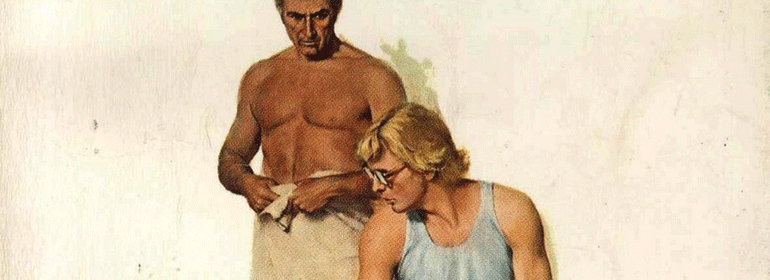As Patricia Nell Warren’s classic gay sports novel, The Front Runner gets a 40th anniversary reprint, Stephen Boylan wonders whether it should have achieved cult status in the first place.
It’s been eight years since I first ran with the Dublin Frontrunners Athletics Club on a stormy October night in 2006. Having just returned from a particularly self-conscious week away in Sitges, I figured joining the club would be the perfect chance to get into shape, de-stress, and meet new people. And so it proved to be. Three marathons, countless 10ks, and a huge amount of blisters later, I count that rainy Wednesday night as one the defining moments of my adult life so far.
What I hadn’t realised before I joined the club was that the Frontrunner movement was actually named after a well-known and well-regarded 1974 novel The Front Runner, written by Patricia Nell Warren. As the novel celebrates its 40th anniversary this year, and given that my training form is well behind where it used to be, it seemed like the perfect time to find some inspiration and give the novel a run. (The timing couldn’t have been better, in fact, given that the book arrived just as former rugby international Neil Francis was sharing his spectacularly ill-informed views on Newstalk.)
At the centre of the book are Billy Sive, a talented young runner with his eyes on a medal at the 1976 Montréal Olympics, and Harlan Brown, a gay former Marine turned athletic coach, slowly rebuilding his personal life and reputation at a small liberal college after a professional scandal. Sive arrives on Brown’s doorstep, along with two of his classmates, to convince Brown to coach him after being expelled from his own college athletics team for being gay.

The book charts their struggles over the course of two years as the pair fall in love, and Sive prepares for Montréal. Meanwhile, as Sive tries to focus on his training and development, the athletics governing body tries to cut him down at every opportunity, worried about the effect an out athlete will have on its Olympic team and, more importantly, on its reputation. Their efforts backfire as Sive becomes a revered figure and media darling in the run-up to the Games.
Over the years many have tried to turn the novel, which has sold over 10 million copies, into a feature film, including Paul Newman, and director Frank Perry (Mommie Dearest). The story also received revived interest after the success of Brokeback Mountain when many in Hollywood were looking to capitalise on the financial success of that film, with Brad Pitt reported to have his eye on the role of Harlan Brown. But to date, no studio has stepped up to the plate, and Warren has regained the movie rights to her novel.
To quote that beloved sports cliché, The Front Runner is a book of two halves. On the one hand, the sporting story is well-told and still exceptionally relevant. The high-stakes sponsorship deals that hang in the balance and the desolation of the athletes who don’t make the grade still form a large part of the professional sporting experience today.Where the book falls down, however, is in the telling of the characters’ personal stories. Perhaps this was going to be inevitable, given that the story was written for an audience forty years ago, but Warren was in such a rush to crystalise every facet of the gay experience that nothing seems to have been deemed too unimportant. What results, in the first instance, is a book that is frantic in its characterisation; Brown is an ex-soldier, a disgraced teacher, a lax husband, a bad father, an expensive prostitute, a masked porn star, and an athletics coach – all by page 35. He constantly objectifies and makes judgements on his fellow gays from a distance, bizarre considering the whole philosophy of the novel is the polar opposite.
This is then compounded by the prose and dialogue. Veering between melodramatic and sociological, the book feels as though it was designed to educate its audience about homosexuality, rather than entertain and engage it with a compelling story. Looking back, it’s a real shame as the book could have served as a poignant look at a furious, pre-Harvey Milk, pre-Maupin period of gay agitation in America. Instead, all we’re left with is a curious, but disappointing, piece of gay literary history.
© 2014 GCN (Gay Community News). All rights reserved.

comments. Please sign in to comment.